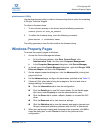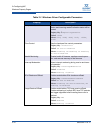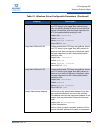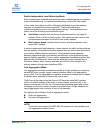
2–Configuring NIC
Teaming/Bonding
SN0054671-00 A 2-17
Switch-Independent Load Balancing Mode
Switch-independent load balancing mode provides a failsafe feature and supports
transmit load balancing. For receive load balancing, use the 802.3ad modes.
In this mode, the outbound traffic is efficiently distributed across the member
adapters to increase the transmit bandwidth. Traffic load balancing is
connection-based to avoid out-of-order packet delivery. The administrator can
select one of the following load distribution types:
Auto Select indicates that the load is distributed based on the target IP
address (IPv4 or IPv6) and port number. This option ensures a one-to-one
correspondence between a traffic flow and a team adapter.
MAC address based indicates that the load is distributed based on the
target MAC address.
In switch-independent load balancing, a team receives the traffic on the preferred
primary adapter. If the preferred primary adapter fails, the receive load switches to
a secondary adapter (failover operation). If the preferred primary adapter
becomes operational again, the receive load fails back to the preferred primary
adapter (failback operation). Thus, a switch-independent load balancing team also
behaves like a failsafe team. Each time the preferred primary changes due to
failover or failback, other network elements are notified of the change in the
primary adapter through team gratuitous ARPs.
Link Aggregation Mode
Link aggregation provides increased bandwidth and high reliability by combining
several NICs into a single, logical, network interface called a link aggregation
group (LAG). The link aggregation is scalable, meaning an adapter can be added
or deleted either statically or dynamically from a team.
Traffic from all the team ports that form a LAG have the same MAC address,
which is the MAC address of the team. If a new adapter joins the LAG, or an
adapter forming the LAG fails, the LAG becomes operational again after a brief
exchange of protocols between the switch and the server. QLogic adapters are
rapidly aggregated, with a latency of one to two seconds.
Two options are available in the link aggregation mode:
Static link aggregation
Dynamic link aggregation
NOTE:
The switch must support the IEEE 802.3ad standard for the preceding two
link aggregation modes to work.


















